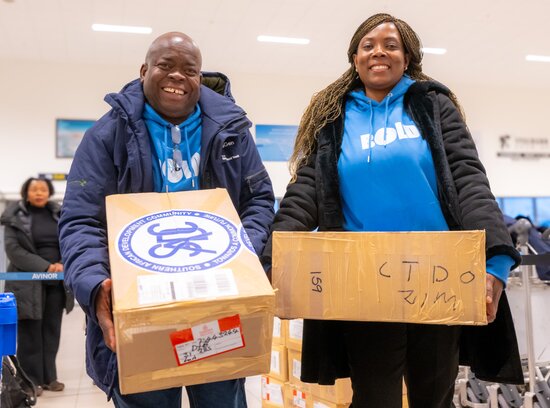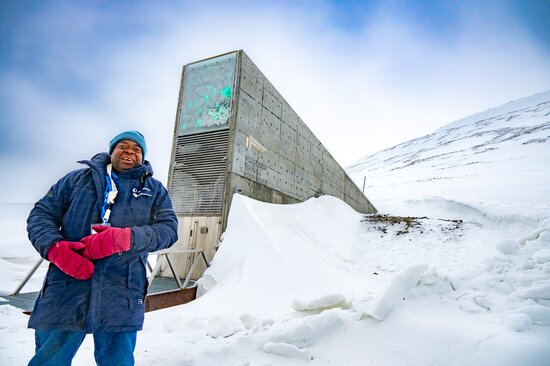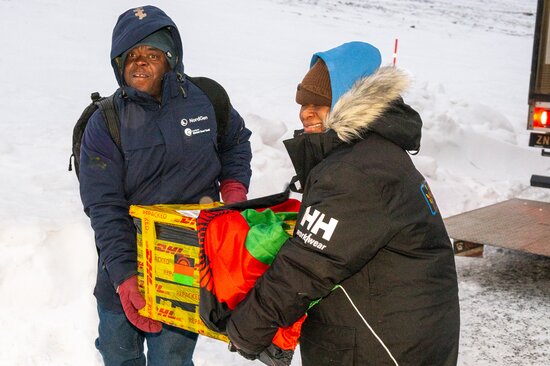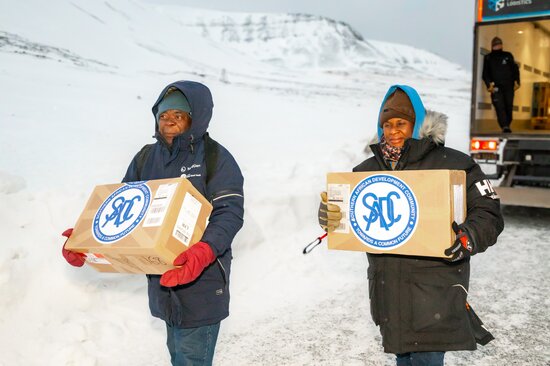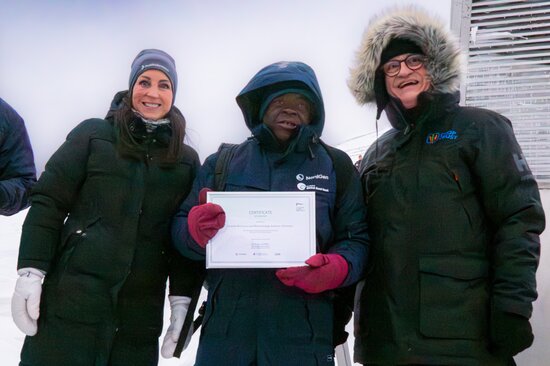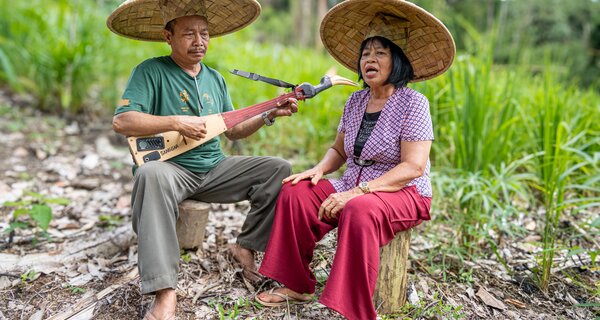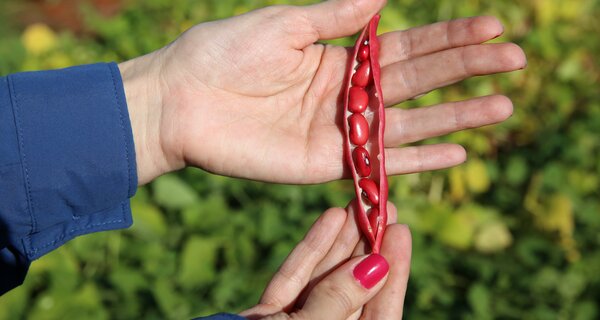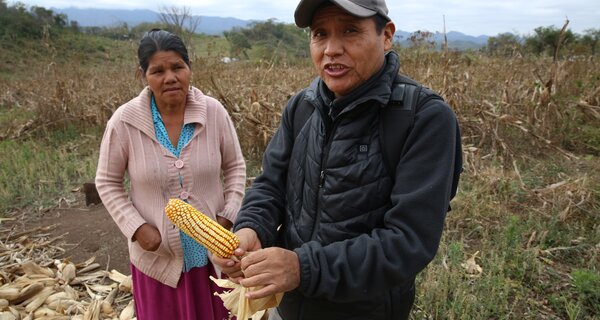Zimbabwe’s Crop Diversity Secured in Svalbard
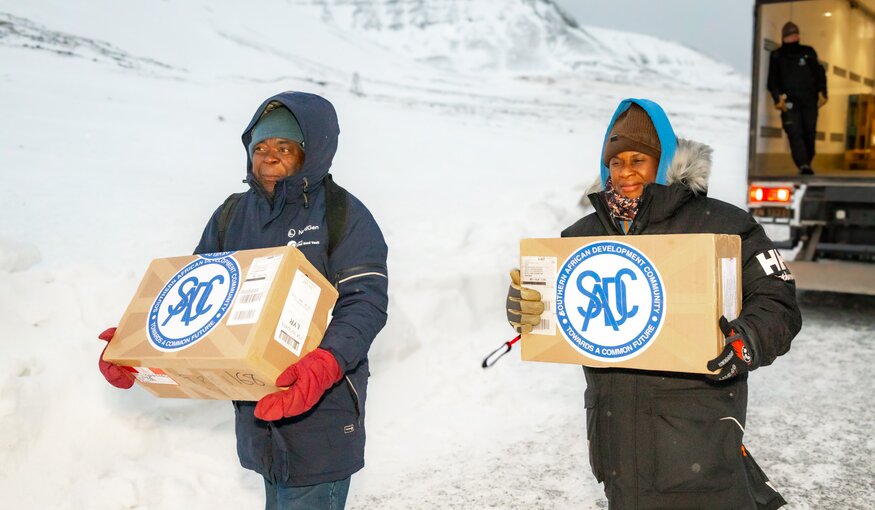
24 February 2025
Sofia ran her hand through a bowl of traditional rice seeds from some nearby farms. “Where should I place this?” she asked her fellow members of the Chimukoko Community Seed Bank. The farmers were identifying and sorting popular crop varieties by putting them into different circles of stones. “Lost crops!” the farmers exclaimed in chorus.
“By placing the rice seeds in the ‘Lost Crops’ circle, the farmers are recognizing that if action isn’t taken, those seeds could be lost forever,” says Patrick Kasasa of the Community Technology Development Trust (CTDT), which supports community seed banks across Zimbabwe.
In February 2025, the CTDT made its first deposit into the Svalbard Global Seed Vault, making that dreadful eventuality considerably less likely.
Most of the farmers in Chimukoko remembered the days when they sowed rice, but many can no longer grow it here; the rainy seasons have become too short due to the changing climate. So this crop diversity is in danger of disappearing.
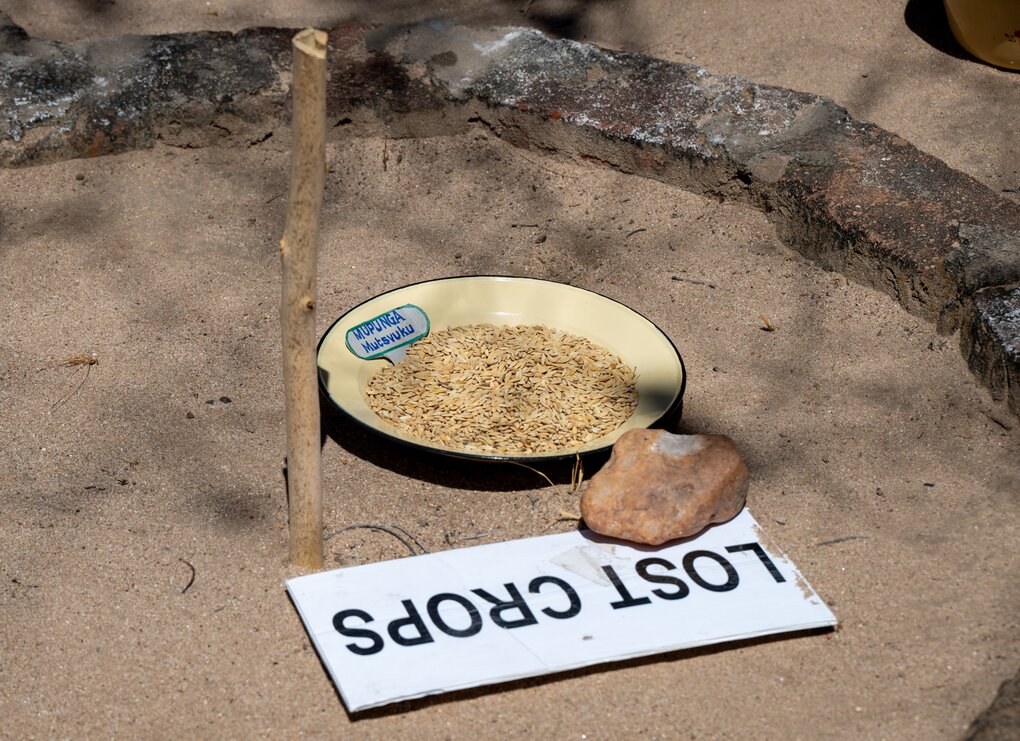
The members of the Chimukoko Community Seed Bank identified rice and sesame as ‘lost crops’. The market for sesame in the district once was good, but farmers stopped planting it when market opportunities diminished. They now consider the crop to be lost. Photo: Michael Major/Crop Trust
That prompted us to first ensure we conserve the remaining rice seed that farmers had and then, secondly, look for other seed banks in the country which might have rice better adapted for the area,” said Patrick.
In February, three institutions from Zimbabwe ensured some of these lost crops were conserved forever in the Svalbard Global Seed Vault. Their efforts are supported by the Crop Trust’s Biodiversity for Opportunities, Livelihoods and Development (BOLD) Project. BOLD is a 10-year effort funded by Norway that strengthens food and nutrition security worldwide by supporting the conservation and use of crop diversity.
A Network of Community Seed Banks
Established in 1993, the CTDT is a non-governmental organization that helps ensure that farmers in Zimbabwe conserve their crop diversity through a network of community seed banks.
“CTDT established 20 community seed banks, just like the one in Chimukoko, in 12 districts across Zimbabwe. They are managed by management committees made up of smallholder farmers, with assistance from CTDT, governmental agricultural extension and National Genebank of Zimbabwe staff,” says Patrick, providing insight into how the network operates.
Edina Sandi, a farmer and member of the Chimukoko Community Seed Bank, says she benefits from the CTDT’s work.
“The CTDT organized Farmer Field Schools, which I have attended,” says Edina. “My neighbors and I learned how to collect and conserve our seeds and then store them at our community seed bank. This gives us confidence that we will always have seeds.”
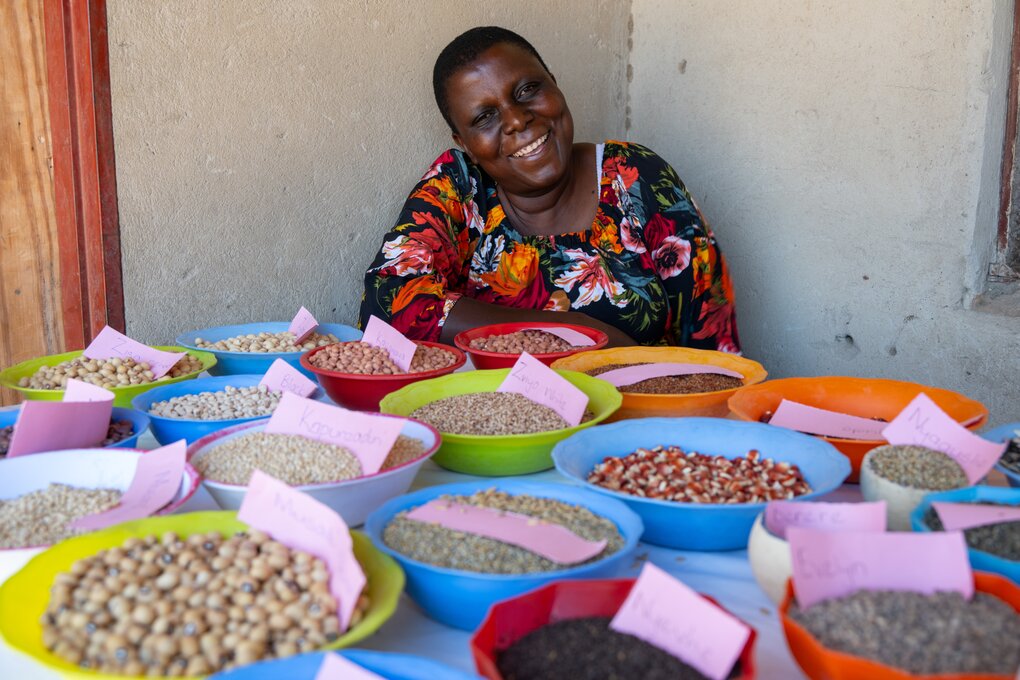
Edina Sandi displays the seeds she has saved from the crops she grows, including cowpea, millets, sorghum and maize. Photo: Michael Major/Crop Trust
Adapting With Opportunity Crops
Farmers like Edina depend on good seeds. “Agriculture is critical to Zimbabwe’s economy and society, serving as a cornerstone for livelihoods, food security and economic growth,” says Patrick. “But Zimbabwe is highly vulnerable to the impacts of climate change. We are facing significant challenges related to shifts in temperature, rainfall patterns, and the frequency and severity of extreme weather events.”
These challenges mean that some crops simply cannot be grown in some areas anymore. Farmers must look for other crops that are more resilient to a changing climate. Often, they turn to local cereals and legumes, such as millet and cowpea. Or they grow opportunity crops like the nutritious and drought-tolerant spider plant, a widely consumed indigenous leafy vegetable sold in rural markets across Zimbabwe.
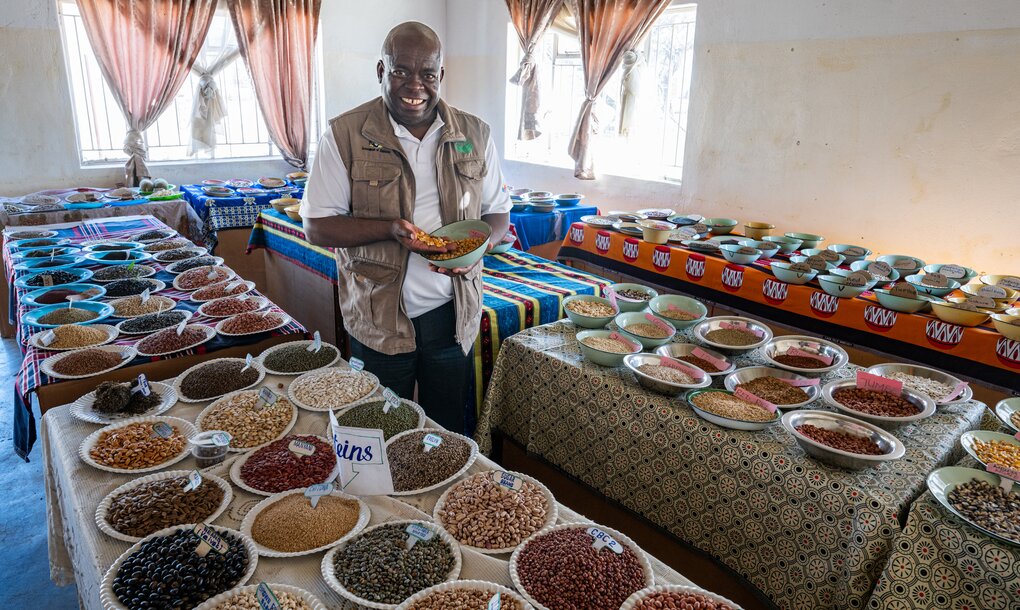
CTDT’s Patrick Kasasa views seeds, including millets, sorghum and cucurbits, at the Chimukoko seed fair. Photo: Michael Major/Crop Trust
“Traditionally, the people of many parts of Zimbabwe make their sadza, a thick starchy paste and a dietary staple, out of maize,” says Beri Bonglim, a BOLD project manager with the Crop Trust. “But now they must use more drought-tolerant crops such as pearl millet. They don’t like millet sadza as much, but they have no choice.”
Farmers turn to their community seed banks and seed fairs to find neglected opportunity crops. These seed banks can be a source of new seeds that farmers can try out in the next season. Multiplying and conserving them for the long term becomes the responsibility of other genebanks in the country, like the one at Lupane State University.
Backing Up the Community Seed Banks
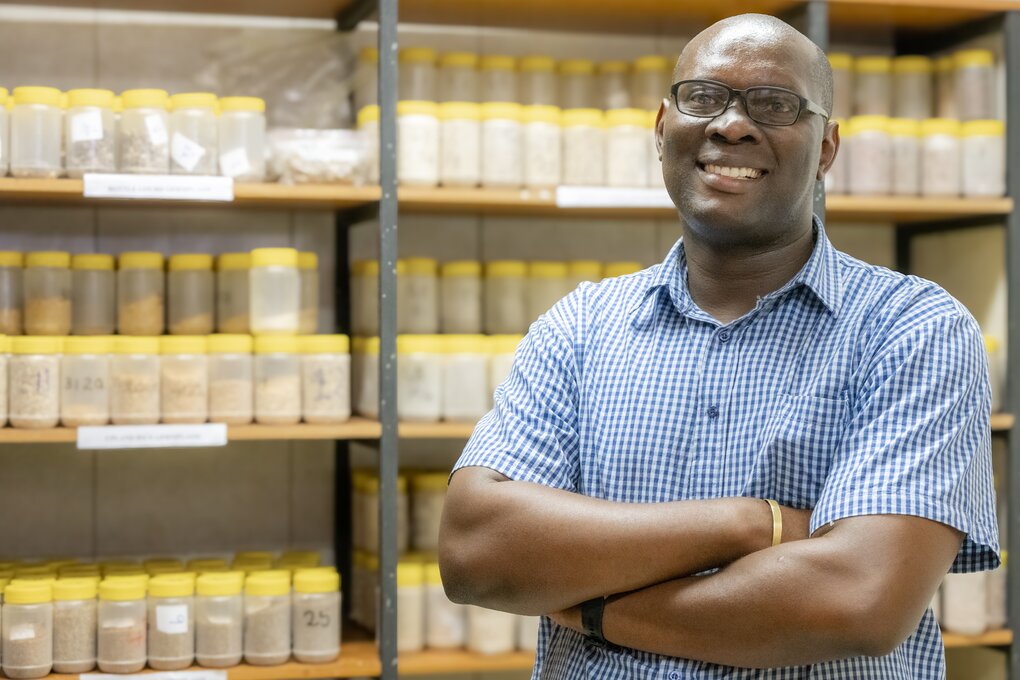
Professor Mcebisi Maphosa of Lupane State University in the traditional grains seed bank. Photo: Michael Major/Crop Trust
The BOLD Project supports partners in Zimbabwe to regenerate seed and ensure sufficient quantities are available to farmers for planting, safety duplication and long-term conservation. Without BOLD support, those partners would struggle to raise the resources for the cost- and labor-intensive regeneration activities.
“Regeneration involves the periodic planting of conserved seeds to renew seed stocks,” says Mcebisi Maphosa of the Department of Crop and Soil Sciences at Lupane State University (LSU). “It’s a critical activity for genebanks because, over time, conserved seeds will die, even if they are kept under optimum conditions.”
BOLD support has enabled Mcebisi and his LSU team to regenerate over 3,100 samples of drought-hardy cereals such as sorghum, finger millet and pearl millet, along with traditional types of watermelon and other folk varieties.
“The farmers are the ultimate beneficiaries of all the diversity that you are seeing here,” says Mcebisi as he displays containers in the university’s seed bank.
From Africa to the Arctic
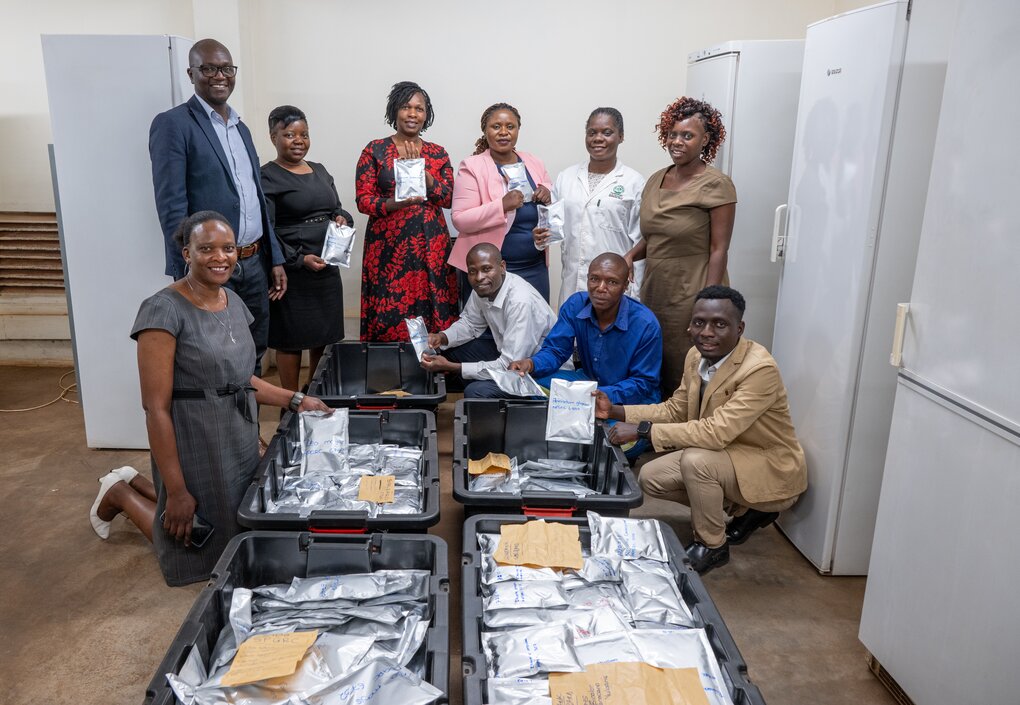
Onismus Chipfunde (standing left) and the team at the Genetic Resources and Biotechnology Institute review the packets of seed being prepared for shipment to the Svalbard Global Seed Vault. Photo: Michael Major for Crop Trust
The long journey from Zimbabwe to the Svalbard Global Seed Vault required several stops. Community seed banks and the genebank at LSU conserve seeds over the short- to medium-term. Conserving those seeds for the long term happens at the Genetic Resources and Biotechnology Institute (GRBI), which oversees the National Genebank of Zimbabwe in Harare.
“We regenerate and characterize the seed collections from all over Zimbabwe and ensure that they get safely duplicated at the Regional Genebank of the Southern African Development Community in Zambia, which serves 16 member states,” says Onismus Chipfunde, the acting head of GRBI.
With support from BOLD, the GRBI team has regenerated seeds from 500 samples of black mustard, finger millet, sunflower, rice, pearl millet, bean, sorghum, cowpea and maize. These were cleaned, properly packaged and shipped to the Regional Genebank in Zambia for safety duplication, which has also sent samples to the Svalbard Global Seed Vault in the Arctic.
Back at the Chimukoko Community Seed Bank, Edina, Sofia, and CTDT will keep looking for “lost crops” and safeguarding and sharing them with other farmers. But if these crops ever disappear from the fields, they will now know where to find them.
Categories: For The Press, For Partners, BOLD, Food Security, Nutritional Security


